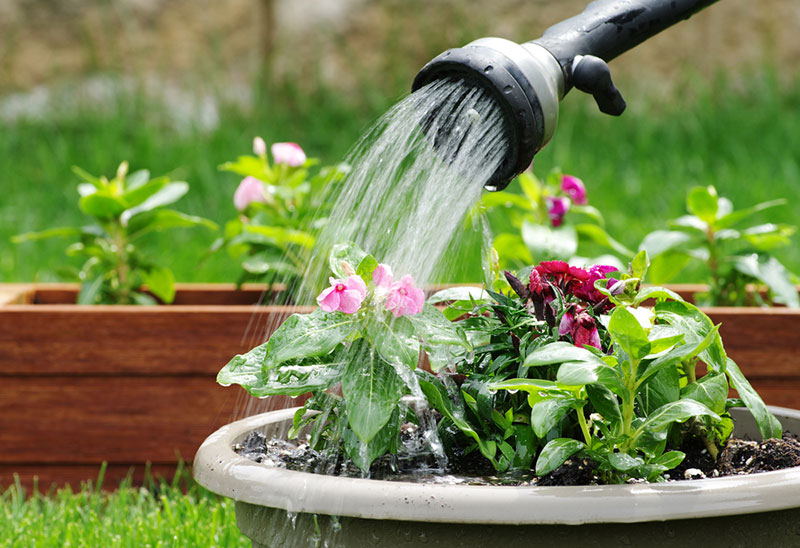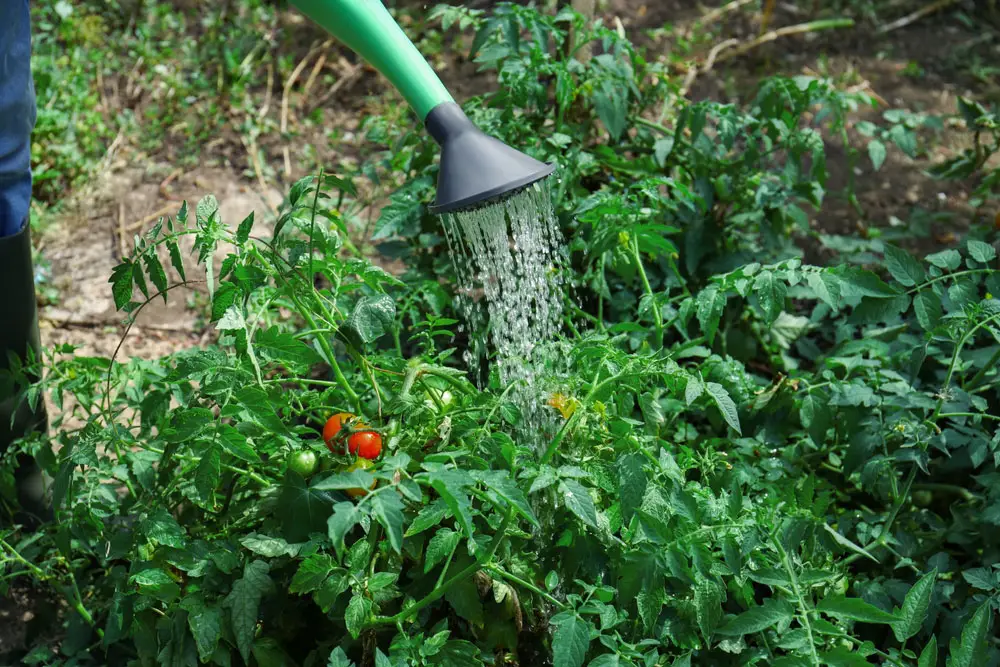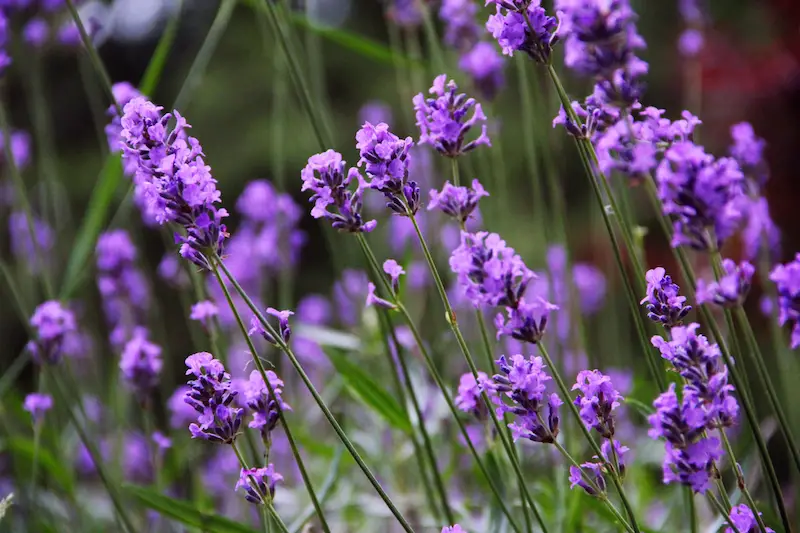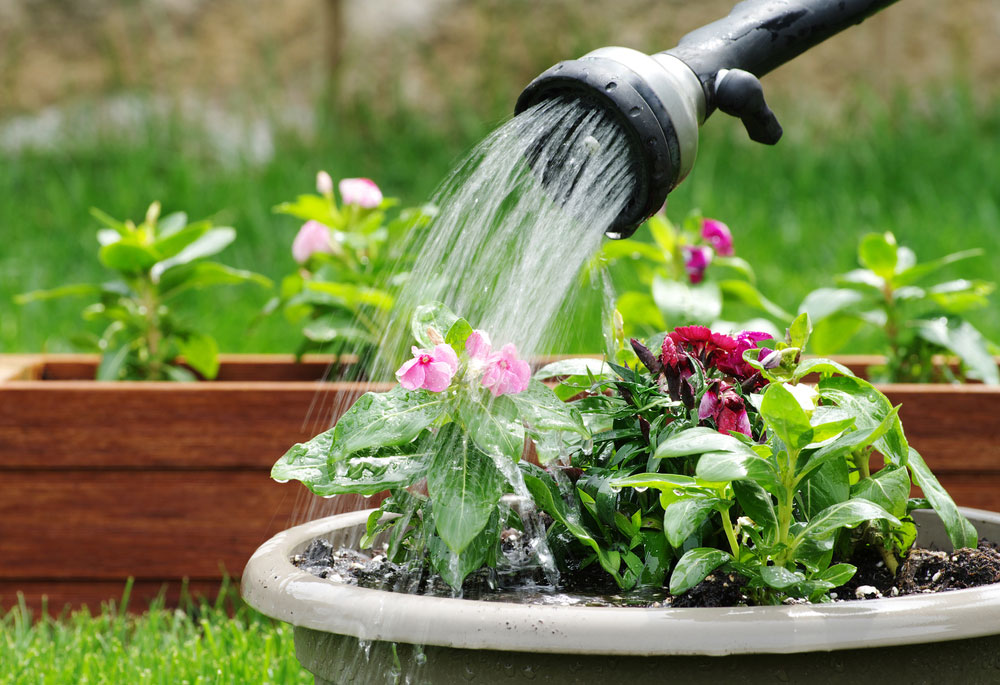As we dive into the heart of summer, it’s time to talk about one of the most crucial aspects of gardening – watering.
July can be a challenging month for our green friends, with scorching temperatures and long, sunny days that can leave plants parched and stressed.
But don’t worry! I’m here to share some tried-and-true tips to keep your garden lush, vibrant, and well-hydrated throughout the hot summer months.
Why Proper Watering Matters in July
Before we jump into the how-tos, let’s chat about why July watering is so important. As temperatures soar, plants lose water faster through transpiration (think of it as plant sweat). At the same time, soil moisture evaporates more quickly. This double whammy can leave your plants gasping for water if you’re not on top of your watering game. Proper watering in July helps:
- Prevent heat stress and wilting
- Encourage deep-root growth
- Support fruit and vegetable production
- Keep your garden looking its best
Now, let’s dive into those essential tips!
1. Water Early in the Morning

Rise and shine, gardeners! The best time to water your garden in July is early in the morning, ideally before 10 am. Why? Here are a few good reasons:
- Less water is lost to evaporation in the cooler morning air
- Plants have time to absorb water before the heat of the day
- Foliage has time to dry, reducing the risk of fungal diseases
If you can’t manage morning watering, the next best time is late afternoon or early evening. Just be sure to water early enough that leaves have time to dry before nightfall.
2. Water Deeply and Less Frequently
When it comes to watering in July, think “slow and steady wins the race.” Instead of frequent light sprinklings, aim for deep, thorough watering sessions less often. This approach encourages plants to develop deep root systems, making them more resilient to drought and heat stress.
How much water is enough? As a general rule, most gardens need about 1-1.5 inches of water per week in July. But don’t just set it and forget it! Factors like soil type, plant variety, and local climate all play a role. Get to know your garden’s specific needs by checking soil moisture regularly.

3. Focus on the Root Zone
When watering, aim for the base of your plants rather than showering the leaves. This ensures water reaches the roots where it’s needed most. Plus, wet foliage in the heat of summer can lead to fungal problems – definitely not what we want! Consider using soaker hoses or drip irrigation systems to deliver water directly to the soil. These methods are not only more efficient but also help prevent water waste through evaporation.
4. Mulch, Mulch, Mulch!
If you haven’t already, July is the perfect time to add a layer of mulch to your garden beds. A 2-3 inch layer of organic mulch (like straw, wood chips, or shredded leaves) works wonders for water conservation. Here’s why mulch is your July watering BFF:
- It reduces evaporation from the soil surface
- Keeps soil temperatures cooler
- Suppresses water-hogging weeds
- Slowly adds organic matter to your soil as it breaks down
Just remember to keep mulch a few inches away from plant stems to prevent rot.
5. Know Your Plants’ Water Needs
Not all plants are created equal when it comes to water needs. In July, pay extra attention to:
- Newly planted trees, shrubs, and perennials (they need consistent moisture to establish roots)
- Vegetables (especially tomatoes, peppers, and cucumbers)
- Container plants (they dry out faster than in-ground plants)
- Plants with large leaves (they lose water more quickly through transpiration)
On the flip side, some plants like lavender, rosemary, and succulents prefer drier conditions. Grouping plants with similar water needs can make your July watering routine more efficient.
6. Use Water-Wise Techniques

Let’s talk about some clever ways to make the most of every drop:
- Collect rainwater in barrels to use during dry spells
- Reuse “grey water” from your home (like water used to rinse vegetables) in the garden
- Add organic matter to your soil to improve water retention
- Use self-watering containers for patio plants
- Consider installing a smart irrigation system that adjusts based on weather conditions
7. Monitor and Adjust
The key to successful July watering is staying observant. Keep an eye out for signs of water stress, such as wilting, yellowing leaves, or stunted growth. On the flip side, also watch for signs of overwatering like consistently wet soil or fungal growth. Don’t be afraid to adjust your watering routine as needed. July weather can be unpredictable, and what works one week might need tweaking the next.
8. Water Quality Matters
In July, when plants are under heat stress, the quality of water you use becomes even more important. If possible, use rainwater or dechlorinated water for sensitive plants. If you’re using tap water, let it sit out for a day to allow chlorine to dissipate.
9. Don’t Forget About Trees
While we often focus on our flowers and veggies, trees need love too! Mature trees have deep root systems and generally need less frequent watering. However, during prolonged dry spells in July, even established trees can benefit from a deep watering every 2-3 weeks. For younger trees (planted in the last 2-3 years), more frequent watering is crucial. Use a soaker hose arranged in a spiral around the tree, starting about a foot from the trunk and extending just beyond the drip line.
10. Embrace Drought-Tolerant Plants

If you find yourself constantly battling dry conditions in July, consider incorporating more drought-tolerant plants into your garden. Plants like lavender, sedum, yarrow, and many native species can thrive with less water once established. This doesn’t mean you never have to water them, but they’ll be more forgiving if you miss a watering session or two.
11. Time for a Water Audit
July is a great time to assess your overall watering system. Take a walk through your garden and look for:
- Leaky hoses or connections
- Sprinklers that are watering sidewalks or driveways instead of plants
- Areas that always seem too dry or too wet
- Opportunities to group plants with similar water needs
Making small adjustments can lead to big water savings over time.
12. Don’t Forget to Enjoy Your Garden!
Last but not least, remember why we garden in the first place – for the joy of it! While proper watering is crucial, don’t get so caught up in the technicalities that you forget to enjoy your beautiful July garden. Take time to smell the roses (or the tomato leaves), watch the pollinators at work, and appreciate the fruits of your labor. There you have it, friends – your guide to July garden watering success! Remember, every garden is unique, so don’t be afraid to experiment and find what works best for your little piece of paradise. With a little attention and care, your garden will thrive through the dog days of summer and beyond.




